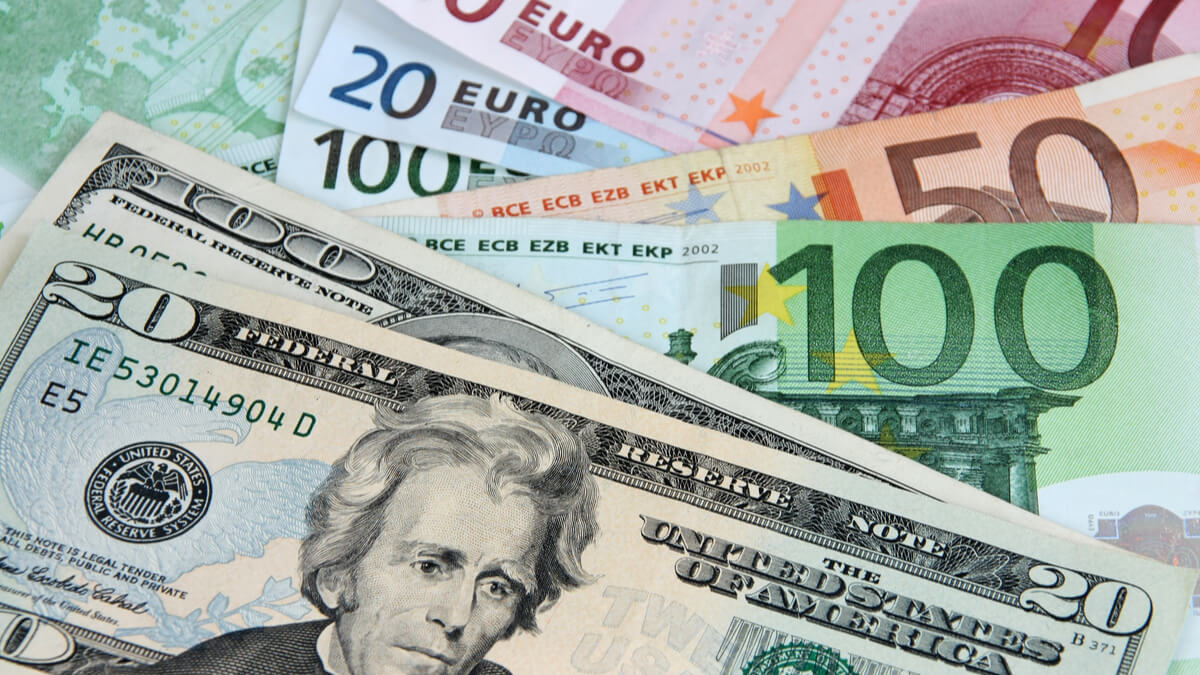Is EverBank safe? Full guide
Wondering is EverBank safe? Our full guide explains security features, fraud protection, FDIC coverage, and tips to protect your money and data.

SEPA - the Single Euro Payments Area - covers many European countries, and allows for frictionless payments in euros across country borders. Payments can be made in several ways under SEPA - including SEPA direct debit schemes, which allow businesses in SEPA countries to collect recurring payments in euros from customers.
This guide covers SEPA consumer and business to business direct debit payment services, and how SEPA direct debit payments are used.
With a Wise account, you can get EUR bank details and set up direct debits for rent, mortgages, bills and much more in the Eurozone. Plus, if you need to send money overseas from the US, send money online with Wise, and get the real mid-market exchange rate with no hidden fees or sneaky markups – but more on this later.
Open a free Wise account today
| 📝 Table of contents |
|---|
SEPA stands for Single Euro Payments Area. SEPA is an ongoing initiative spearheaded by the EU (European Union) to harmonize payments within the Eurozone and some other countries within Europe. The aim is to make it as fast, easy and cheap to make euro payments to other countries within SEPA as it is to make a domestic payment¹.
SEPA covers all EU countries, but also a few other European countries like the UK and Switzerland, which are not members of the EU. In total, 36 countries use SEPA at present. SEPA covers 3 different payment schemes:
- SEPA Direct Debit(SDD or SEPA DD)²
- SEPA Credit Transfer (SCT)
- SEPA Cards Framework (SCF)
The different SEPA payment schemes cover varied payment types - and work is ongoing within SEPA to harmonize other payment types, like mobile and online transfers. This guide will focus on SEPA direct debit - you can learn more about other payment types on the SEPA pages of the European Payments Council website.

SEPA direct debit payments are similar to ACH debit payments in the US. Although there are a few important differences to the way ACH debits work at home, SEPA DD transfers are used to allow businesses to pull recurring payments from customer accounts. As with ACH debits, a customer will authorize a business using a SEPA direct debit mandate, and the company can then collect payments according to the agreed terms. Payment amounts can vary, making SEPA direct debits a useful payment instrument for bills that change month by month, like utility costs or a phone bill.
SEPA direct debit payments can be made by customers to companies - or for business to business transfers, under the 2 SEPA DD schemes:
- SEPA Direct Debit Core (SEPA DD Core or SDD Core)
- SEPA Direct Debit B2B (SDD B2B)
Although SEPA DD payments roughly match ACH debit transfers in the US, they’re not exactly the same. Here are some key points to note:
Both are electronic payment methods which can be used for one off or recurring billing
Both are pull payment types, where the organization being paid is authorized to collect payments from the customer account
Both can be used for fixed or varied payment amounts
Both are managed through strict protocols to keep customer money safe and ensure efficient, cheap payments
SEPA DD payments can only be made in euros, even if the accounts involved in a transfer are held in other currencies
You’ll need to provide an IBAN and SWIFT/BIC code for SEPA payments, rather than an account and routing number as in the US
Customers can request a refund for a SEPA DD for up to 13 months after a payment is processed
SEPA direct debits can be made under both the core and B2B scheme, and the processing rules and protections do vary according to the payment type

Not sure if SEPA direct debit is right for you? Here are some common examples of when SEPA DD payments can be helpful.
SEPA DD payments allow customers to set up repeat transfers which is easier for them, and ensures businesses are paid in full and on time. Good for consumer subscription services, mortgage and rent payments, or utility bills for example.
SEPA DD payments can also be used for B2B transfers - handy if you’re paying a regular retainer to a service provider, or if you have an ongoing payment arrangement to a supplier.
Using a SEPA DD for business invoicing puts the recipient business in control of the payment date and amount. The payer only needs to complete a single authorization through a direct debit mandate, and the recipient can then trigger invoice payments when required.
SEPA direct debit payments are especially useful in countries where card payments are not as popular. No card provider is involved in a SEPA DD, instead the money simply passes from one bank account to another.
SEPA DD payments are not always the best option.
If you need a transfer to happen instantly, SEPA direct debits aren’t the right payment instrument to use. Similarly, as customers have very high levels of protection and can request a chargeback at any point in the 13 months after a payment is processed, SEPA DD transfers aren’t a good choice when customer returns are likely.
When you set up a SEPA direct debit, you’ll complete a mandate authorizing the company to collect payments. To end the arrangement you’ll need to cancel the mandate with your own bank. This can usually be done by logging into your online banking service.
It's never been easier to set up Euro direct debits. With a Wise account, you can get EUR bank details and use direct debit to pay rent, bills, mortgages, or get your European pension.
Plus, with Wise, you can cut the costs of sending money overseas and save up to 6x compared to old-school banks. Hold 50+ currencies, get your own local account details for 10 currencies and convert to the currencies you need, with low and transparent fees.
Both direct debit and standing order payments are processed electronically and can be used for recurring bills. However, they are different in the way they are set up, and in who is in control.
A SEPA direct debit is a pull payment type, in which the company being paid triggers the transfer. On the other hand, a standing order is controlled by the customer. Direct debit payments can be used for varied amounts and payment dates - standing orders can only be used for repeat transfers of the same value.
SEPA Direct Debits are set up to allow a company or organization to pull money from a customer account automatically and in accordance to an advance agreement.
SEPA Credit Transfers, on the other hand, are push payments. SEPA Credit Transfers are more commonly used for one off payments - although they can also include standing orders which may be recurring - and are set up by the customer pushing funds to another account.
1]European Payments Council - about SEPA
2]European Payments Council - SEPA direct debit
All sources checked on 21 October 2021
*Please see terms of use and product availability for your region or visit Wise fees and pricing for the most up to date pricing and fee information.
This publication is provided for general information purposes and does not constitute legal, tax or other professional advice from Wise Payments Limited or its subsidiaries and its affiliates, and it is not intended as a substitute for obtaining advice from a financial advisor or any other professional.
We make no representations, warranties or guarantees, whether expressed or implied, that the content in the publication is accurate, complete or up to date.

Wondering is EverBank safe? Our full guide explains security features, fraud protection, FDIC coverage, and tips to protect your money and data.

Wondering is Santander safe? Our full guide explains security features, fraud protection, FDIC coverage, and tips to protect your money and data.

Wondering is Vanguard safe? Our full guide explains security features, fraud protection, FDIC coverage, and tips to protect your money and data.

Wondering is TD Bank safe? Our full guide explains security features, fraud protection, FDIC coverage, and tips to protect your money and data.

Explore Xoom vs Venmo: a detailed comparison of their features, fees, security, and more to help you choose the best money transfer service.

Looking for a Fidelity alternative? Compare the top 5 options in 2025 and find the best app for international payments, spending, and saving.